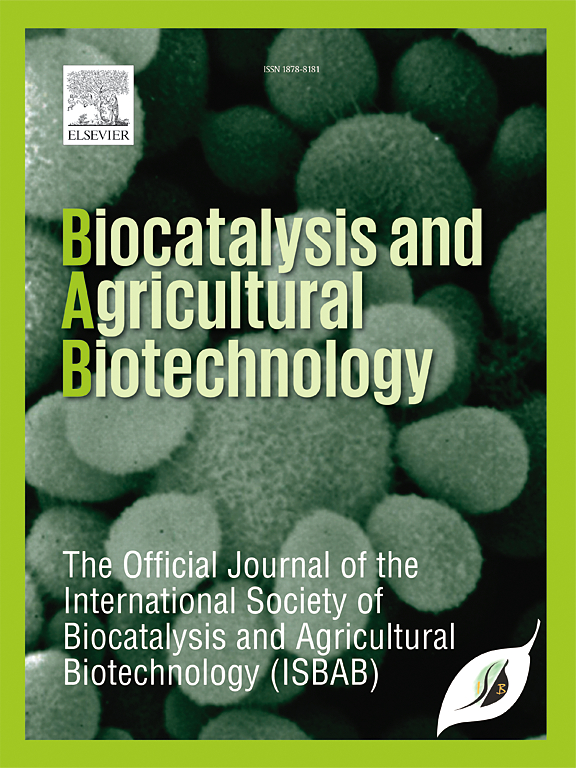Filamentous fungi as a biotechnological tool for the biotransformation of betulin
IF 3.4
Q2 BIOTECHNOLOGY & APPLIED MICROBIOLOGY
引用次数: 0
Abstract
Betulin, an inexpensive substrate extracted primarily from birch bark, exhibits wound-healing properties; yet its high hydrophobicity limits its bioavailability. Given that biotransformation can produce metabolites with modified chemical and biological properties, we sought to develop an efficient biocatalyst for the biotransformation of betulin. We isolated, characterized, and evaluated the ability of six fungi to biotransform betulin. The isolates were identified as Penicillium citreonigrum, Fusarium oxysporum, Fusarium redolens, Blastobotrys sp., Aspergillus niger, and Penicillium pimiteouiense and were cultured in biotransformation medium supplemented with betulin (10 mg/mL) for 4–7 days. Under the biotransformation conditions, Aspergillus niger exhibited the highest metabolic activity, producing biomass up to 1.29 g/L, acidifying the medium by increasing redox potential (404 mV), and lowering pH (3.29), while Blastobotrys sp. and Penicillium pimiteouiense had the lowest metabolic activity. All six isolates converted betulin to betulonic acid with Fusarium oxysporum exhibiting the highest bioconversion (0.74 g/L), followed by Fusarium redolens (0.72 g/L). Furthermore, at the adopted concentration, betulin biotransformation exerts no toxicity on fungal biomass. Therefore, the obtained results imply that the application of fungal cells as biological systems for betulin biotransformation can produce betulonic acid and for the first time, fungal-mediated biotransformation of betulin to betulonic acid was demonstrated.

求助全文
约1分钟内获得全文
求助全文
来源期刊

Biocatalysis and agricultural biotechnology
Agricultural and Biological Sciences-Agronomy and Crop Science
CiteScore
7.70
自引率
2.50%
发文量
308
审稿时长
48 days
期刊介绍:
Biocatalysis and Agricultural Biotechnology is the official journal of the International Society of Biocatalysis and Agricultural Biotechnology (ISBAB). The journal publishes high quality articles especially in the science and technology of biocatalysis, bioprocesses, agricultural biotechnology, biomedical biotechnology, and, if appropriate, from other related areas of biotechnology. The journal will publish peer-reviewed basic and applied research papers, authoritative reviews, and feature articles. The scope of the journal encompasses the research, industrial, and commercial aspects of biotechnology, including the areas of: biocatalysis; bioprocesses; food and agriculture; genetic engineering; molecular biology; healthcare and pharmaceuticals; biofuels; genomics; nanotechnology; environment and biodiversity; and bioremediation.
 求助内容:
求助内容: 应助结果提醒方式:
应助结果提醒方式:


